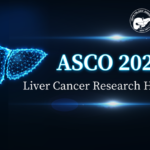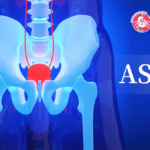
Editor's Note: Recently, Professor Naga P. Chalasani and his research team from Indiana University published a significant study online in the prestigious hepatology journal JOH. The study, titled "Increases and Decreases in Liver Stiffness Measurements are Independently Associated with the Risk of Liver-Related Events in NAFLD Patients," was initiated by Professor Naga P. Chalasani in collaboration with key researchers in the NAFLD field across the United States, including Professor Arun J. Sanyal from Virginia Commonwealth University. The study aims to provide new insights into disease management and risk assessment for NAFLD patients.Study Background and Objectives
The clinical significance of changes in liver stiffness measurement (LSM) in NAFLD patients is not yet fully understood. This prospective study analyzed the progression and regression of compensated advanced chronic liver disease (cACLD) based on LSM and explored the association between LSM and liver-related events (LRE).
Study Methods
Participants were drawn from two clinical studies in the NASH Clinical Research Network NAFLD database in the United States. cACLD progression was defined as participants with a baseline LSM <10 kPa who later had LSM ≥10 kPa during follow-up; cACLD regression was defined as participants with a baseline LSM ≥10 kPa whose LSM dropped below 10 kPa during follow-up. LRE was defined as the occurrence of at least one of the following: liver-related death, liver transplantation, hepatocellular carcinoma, MELD score >15, variceal progression, or liver decompensation. Cox regression analysis was used to compare the cumulative probability of LRE between the cACLD progression and regression states.
Study Results
Among the 1,403 participants, there were 89 LREs over an average follow-up of 4.4 years, with an annual incidence rate of 1.5 (95% CI: 1.2-1.8). The prevalence of LSM ≥10 kPa or ≥15 kPa among participants was 29% and 17%, respectively, while the prevalence of LSM <10 kPa or <15 kPa was 44% and 49%, respectively. The analysis revealed that participants with cACLD progression (≥10 kPa) had a higher cumulative LRE rate compared to those without cACLD progression (16% vs. 4%, aHR: 3.8, P<0.01). Conversely, participants with cACLD regression (LSM <10 kPa) had a lower cumulative LRE rate compared to those without regression (7% vs. 32%, aHR: 0.25, P<0.01).
Study Conclusions
This large prospective study demonstrates that baseline LSM and dynamic changes in LSM in NAFLD patients are independently and bidirectionally associated with the risk of LRE. The findings suggest that LSM can serve as a non-invasive surrogate marker for clinical outcomes in NAFLD patients.
Researcher Commentary
Professor Naga P. Chalasani
As NAFLD becomes an increasingly common chronic liver disease, it poses a serious threat to patients’ quality of life and health. Currently, clinical methods for prognostic assessment and monitoring treatment effects in NAFLD patients lack accuracy and non-invasiveness. In this new study, we utilized VCTE technology to continuously monitor liver stiffness in NAFLD patients and analyze the relationship between changes in LSM and the risk of LRE.
The study found that changes in LSM are independently and bidirectionally associated with the risk of LRE in NAFLD patients. Specifically, patients with increased LSM had a significantly higher incidence of LRE compared to those without progression; conversely, patients with decreased LSM had a significantly lower risk of LRE. This finding provides a new non-invasive indicator for risk assessment in NAFLD patients, helping clinicians more accurately predict disease progression and develop more personalized treatment plans for patients.
The results of this study not only bring new breakthroughs to NAFLD research but also relieve NAFLD patients from the burden of invasive liver examinations. As research progresses and technology improves, we believe that we can better understand and control NAFLD, bringing better treatment outcomes and quality of life to patients.
Original Article Link: Gawrieh S, Vilar-Gomez E, Wilson LA, et al. Increases and decreases in liver stiffness measurements are independently associated with the risk of liver-related events in NAFLD. J Hepatol. 2024 May 16(24)00343-X. doi: 10.1016/j.jhep.2024.05.008. Epub ahead of print.


